J. Stopar
LROC News System
A domical mound protrudes from the floor of Copernicus crater (see 10.332°N, 340.117°E), which is dominated by a solidified sea of impact melt rocks.
These rocks host a variety of positive- and negative-relief features including collapse features, central peaks, and blocky cratered mounds like the one above.
Mounds with craters near their peaks can superficially resemble volcanoes, which often have a summit crater. Previously, several examples of cratered mounds, usually located along the mare-highlands boundaries, were suggested as possible newly discovered volcanoes (Volcanoes in Lacus Mortis, Bull's Eye Crater or Volcanic Vent, Another Small Volcano).
 |
| Cratered and Boulder dome on northern bifurcated floor of Copernicus (small arrow, above center). The demarcation between the character of the western and eastern floor, north of the landmark twin central peaks of Copernicus are particularly striking in spectral analysis. LROC WAC observation M147109260CE (643 nm), spacecraft orbit 6813, December 16, 2010; angle of incidence 77.97° at 60 meters per pixel resolution from 43.13 km [NASA/GSFC/Arizona State University]. |
This mound remains unexplored, thus we don't know for sure how it formed. Below is a collection of lunar mounds that are similar in appearance. For each example, try to think about how (or why not) these features might shed light on the formation of the cratered mound in Copernicus.
1. Volcanic Dome?
The summit crater of a volcano is expected to lack a raised rim and is usually less circular than an impact crater. Some small domes at the Compton-Belkovich silicic volcanic complex have craters that are thought to be summit vents (Example 1).
Low basaltic shield volcanoes like those in the Hortensius region also have summit craters (Example 2). The crater on the Copernicus mound lacks a prominent rim crest, but high-resolution NAC-derived topography would better help us differentiate between a degraded impact crater and a volcanic crater in this case.
2. Cratered Impact Debris?
Impact debris often appears dome-shaped and sometimes lacks craters (Example 3), although these mounds are frequently cratered.
Larger mounds to the north of Today's Featured Image also exhibit craters near their peaks (Example 4). This type of cratered mound is fairly common on the floor of large impact craters.
3. Blocks as Remnants of Impact Melt that Once Draped the Mound?
Lumpy mounds on the floor of Rutherfurd crater (Example 5) are littered with the broken fragments of impact melt rocks. These rocks formed as sheets of impact melt draped over the crater floor. Over time, this sheet of rock slowly breaks up and dis-aggregates.
A cracked mound on the floor of Anaxagoras crater (Example 6) illustrates what this sheet of melt might look like before dispersion through mass wasting. The boulders on the Copernicus mound could represent degraded bits of draping impact melt rocks; however, there is little evidence for a coherent layer of solidified melt as in the Anaxagoras example.
4. Squeeze-ups of Impact Melt?
Squeeze-ups of molten rock are one possible form of pseudo-volcanism that might occur in a molten sea of impact melt (Example 7).
However, squeeze-ups tend to experience tensional stress across their peak (Example 8), but in the Copernicus example, we do not see any evidence of stress fracturing across the mound. Thus, when all the evidence is considered together, the cratered mound in Copernicus is most consistent with a block of impact debris with a small impact crater near its summit -- not volcanic at all!
Explore the entire NAC image HERE, and look for evidence of other explanations for this cratered mound.
Some Related Posts:
Shiny Mound, April 3, 2014
Hansteen α, January 15, 2014
Jackson's complexity, January 9, 2014
X marks the spot on the floor of Stevinus, January 7, 2014
Diversity of basaltic volcanism and the Marius Hills, November 5, 2013
Fall Out, October 3, 2013
That's a Relief, October 1, 2013
The Domes of Stevinus Crater, April 23, 2013
The Fourth Marian Dome, April 17, 2013
New oblique views of Gruithuisen Domes, March 4, 2013
Kagami-Mochi on the Moon, February 12, 2012
Morphology of lunar volcanic domes, February 22, 2011
Anomalous Mounds on the King Crater Floor, May 3, 2011
Constellation ROI at Hortensius Domes, April 2, 2010
1. Volcanic Dome?
The summit crater of a volcano is expected to lack a raised rim and is usually less circular than an impact crater. Some small domes at the Compton-Belkovich silicic volcanic complex have craters that are thought to be summit vents (Example 1).
 |
| Example 1: A cratered and blocky dome at the Compton-Belkovich silicic volcanic complex, in the farside highlands. 510 meter-wide field of view from LROC NAC mosaic M119198897LR, LRO orbit 2700, January 27, 2010; resolution 60 cm per pixel, incidence angle 76.56° from 54.09 km [NASA/GSFC/Arizona State University]. |
 |
| Example 2: Mare domes of Hortensius, west by southwest of Copernicus, in Oceanus Procellarum. Low profile, basaltic shield volcanoes, from a dramatic LROC NAC oblique observation, about 16.6 km-wide field of view from a mosaic of the left and right frames from LROC NAC M1108418130, spacecraft and camera slewed 56.7° west of a descending nadir, LRO orbit 15626, November 24, 2012; illumination incidence angle 74.56° at an average resolution of 2.87 meters, from 112 km over 7.28°N, 332.85°E [NASA/GSFC/Arizona State University]. |
Impact debris often appears dome-shaped and sometimes lacks craters (Example 3), although these mounds are frequently cratered.
 |
| Example 3: Bouldery Mound in Anaxagoras. 910 meter-wide field of view from LROC NAC M155309869RE, LRO orbit 8022, March 21, 2011; incidence angle 72.1° and resolution 88 cm per pixel from 42.15 km [NASA/GSFC/Arizona State University]. |
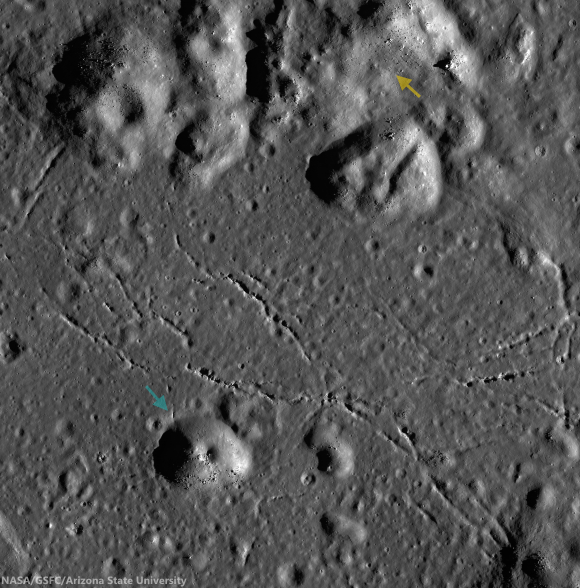 |
| Example 4: Similar debris and impact melt fallout mounds observed to the north (yellow arrow) of the bouldery mound (blue arrow) on the north floor of Copernicus. Both are comprised of impact debris and wall materials. Image is cropped portion of LROC NAC controlled mosaic COPERNICLOB [NASA/GSFC/Arizona State University]. |
Lumpy mounds on the floor of Rutherfurd crater (Example 5) are littered with the broken fragments of impact melt rocks. These rocks formed as sheets of impact melt draped over the crater floor. Over time, this sheet of rock slowly breaks up and dis-aggregates.
 |
| Example 5: The Lumpy floor of Rutherfurd crater; 1050 meter wide field of view from LROC NAC observation M1123653329R, LRO orbit 17769, May 20, 2013; resolution 1.05 meters, incidence angle 81.13° from 50.43 km [NASA/GSFC/Arizona State University]. |
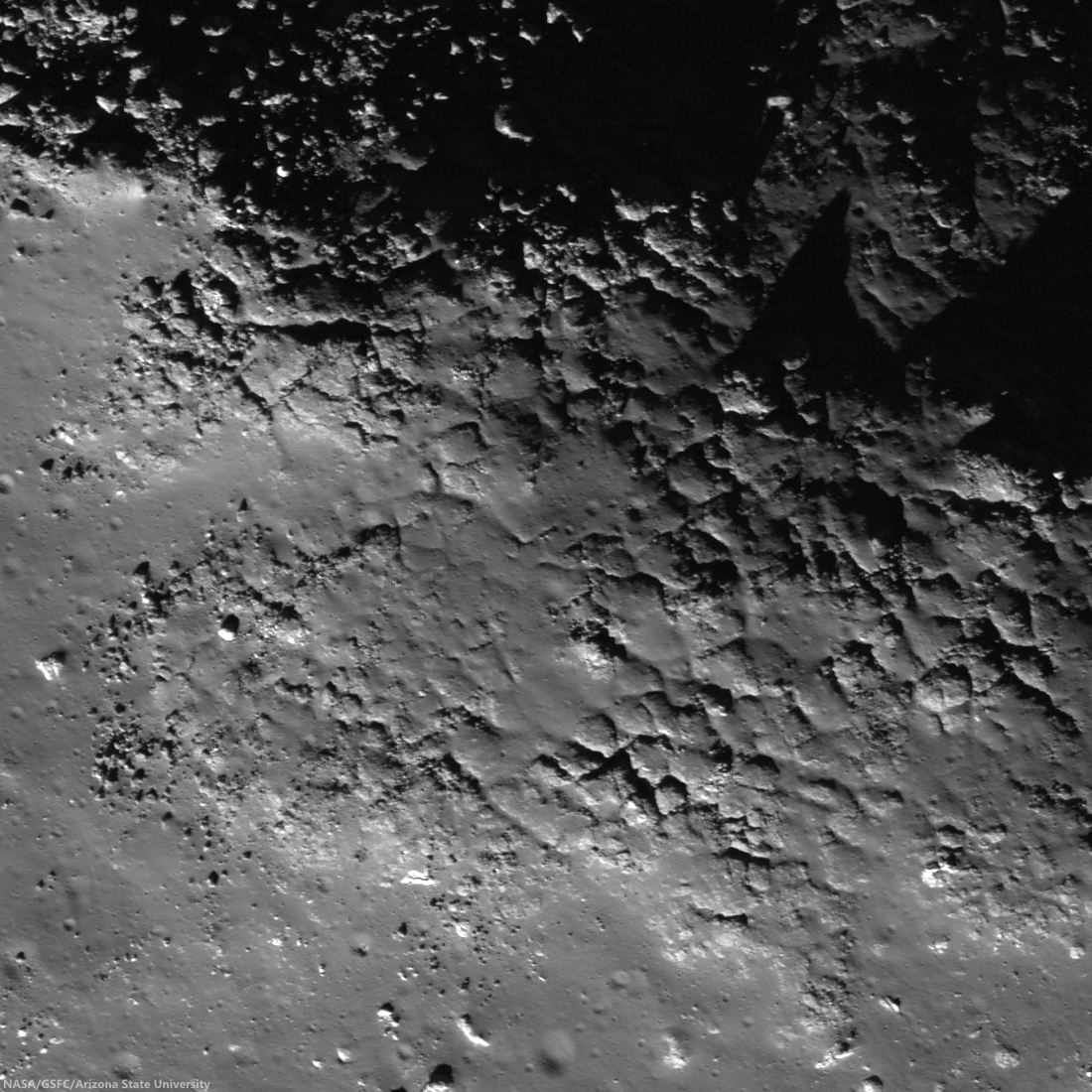 |
| Example 6: Cracked mound on the floor of Anaxagoras; 600 meter-wide field of view from LROC NAC M122273232L, LRO orbit 3153, March 3, 2010; resolution 49 cm per pixel, incidence 73.78° from 42.18 km [NASA/GSFC/Arizona State University]. |
Squeeze-ups of molten rock are one possible form of pseudo-volcanism that might occur in a molten sea of impact melt (Example 7).
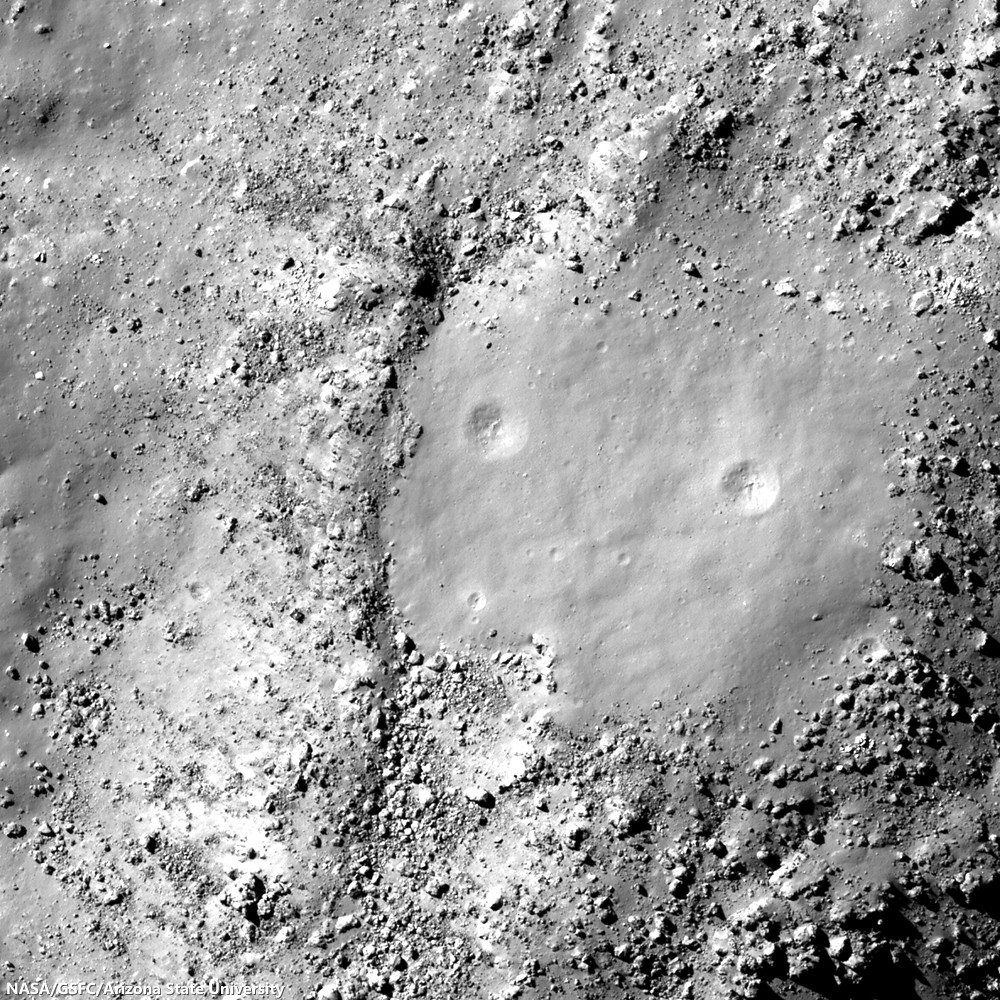 |
| Example 7: A possible squeeze-up of impact melt in Tycho crater; field of view 730 meters, LROC NAC observation M1144856403R, LRO orbit 20751, January 20, 2014; illumination incidence angle 57.92° at 72 cm per pixel resolution, from 59.2 km [NASA/GSFC/Arizona State University]. [NASA/GSFC/Arizona State University]. |
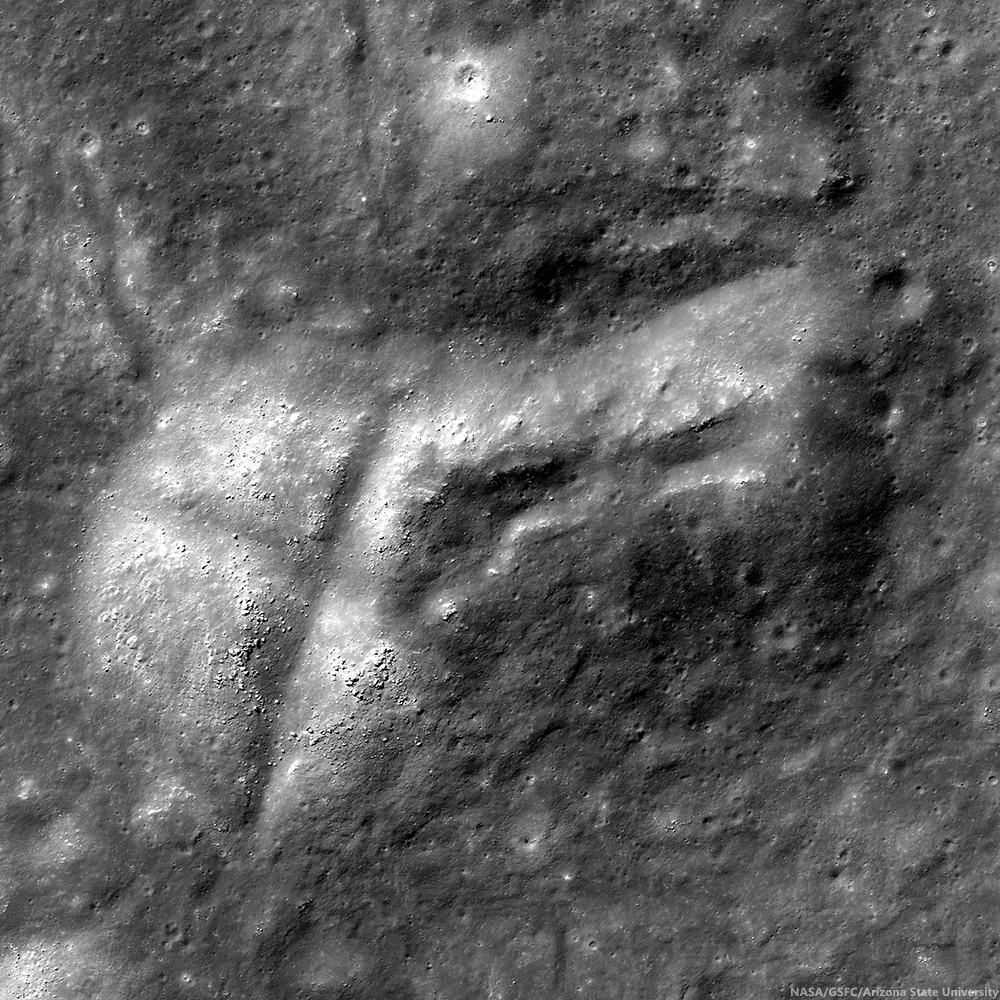 |
| Example 8: Fractured mound in Stevinus crater; Structure is roughly 3 km across, LROC NAC observation M1131495601R, LRO orbit 18872, August 18, 2013; resolution 78 cm, incidence 37.88° from 75.5 km [NASA/GSFC/Arizona State University]. |
Some Related Posts:
Shiny Mound, April 3, 2014
Hansteen α, January 15, 2014
Jackson's complexity, January 9, 2014
X marks the spot on the floor of Stevinus, January 7, 2014
Diversity of basaltic volcanism and the Marius Hills, November 5, 2013
Fall Out, October 3, 2013
That's a Relief, October 1, 2013
The Domes of Stevinus Crater, April 23, 2013
The Fourth Marian Dome, April 17, 2013
New oblique views of Gruithuisen Domes, March 4, 2013
Kagami-Mochi on the Moon, February 12, 2012
Morphology of lunar volcanic domes, February 22, 2011
Anomalous Mounds on the King Crater Floor, May 3, 2011
Constellation ROI at Hortensius Domes, April 2, 2010

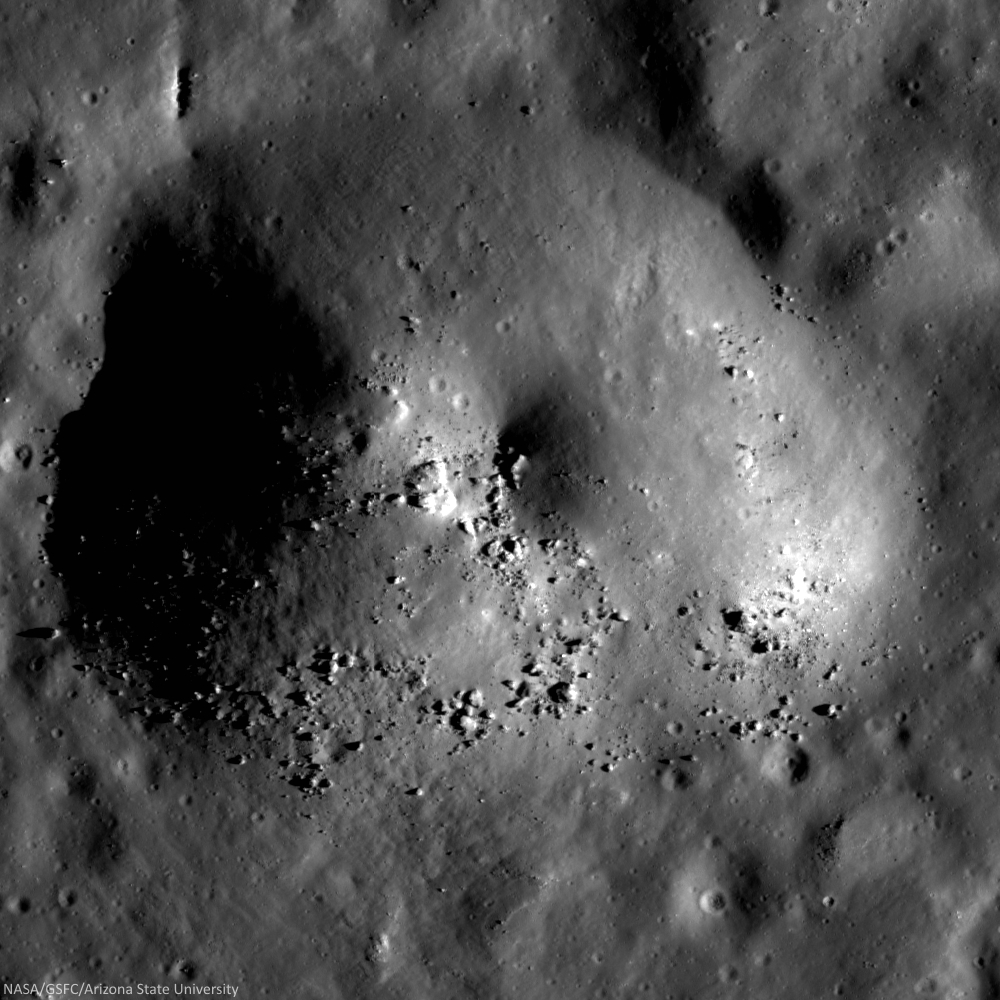

No comments:
Post a Comment